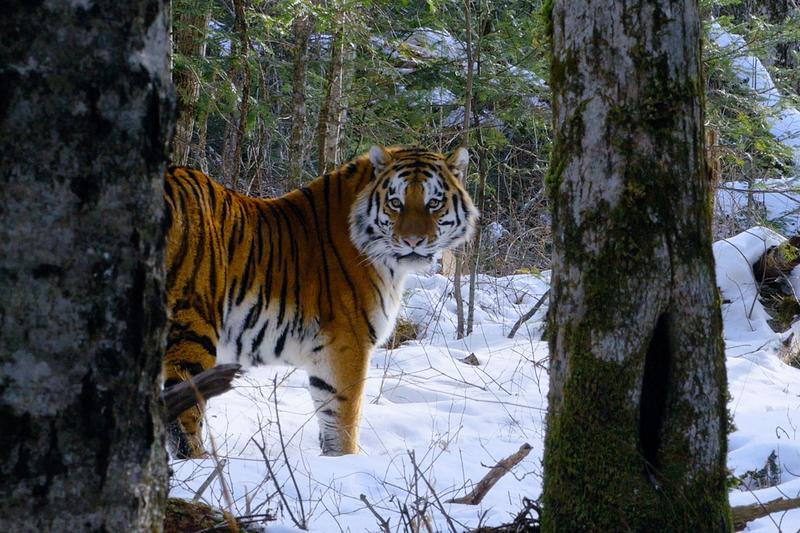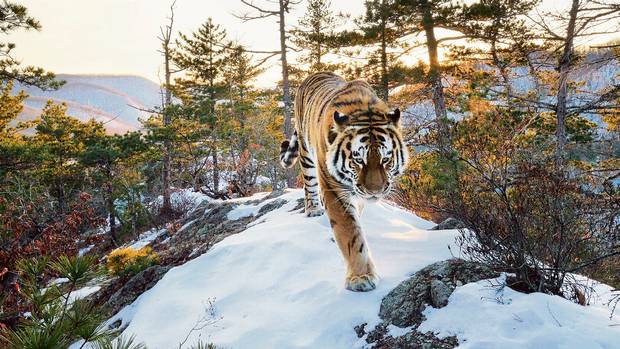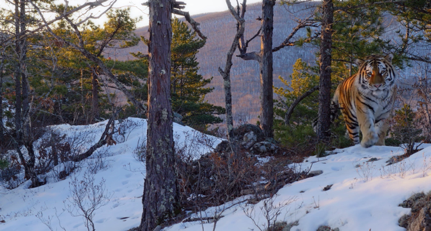
“The invitation is now to be able to talk to your children from home
on vocational decisions, on what moves them,
what they were once passionate about and now maybe not (or maybe not),
of the path that is not linear, of learning through mistakes.”
In times of environmental challenges we are experiencing and the need to raise awareness about our actions and lifestyles to protect the planet, Netflix presents its new and spectacular 8-chapter documentary called “Our Planet”. This series shows truly magical and incredible places, and thanks to the latest technology used (drones, and Ultra HD 4k cameras) one has the sensation of swimming in the ocean, or walking through the jungle with the animals. One of the moments that impacted me the most in the series (sorry for the spoiler) was when they recounted the experience of having filmed the Siberian tiger in the Russian Far East.
These types of tigers, in addition to being shy and elusive, are one of the many species that are in danger of extinction: there are less than 600 left. The camera team of “Our Planet” They prepare a detailed plan to be able to film them. But they are faced with a big problem: these animals tend to flee if they sense the presence of humans, and they can easily sense it, so they have to set up small wooden huts as hiding places to get into the tiger's habitat. Inside these tiny huts the cameramen live for several days without being able to leave, hoping to meet the aforementioned animal.
At the same time, a member of the camera crew named Kieran O'Donovan travels miles and miles installing a network of cameras thanks to the suggestions of local scientists, to try to identify the true route of the tiger. How do these cameras work? They are activated by movement, so Kieran must return periodically to review the shots and see if he finally manages to get the long-awaited image. The first few days go by, then months, and they manage to successfully film a lot of animals, less the famous Siberian tiger.
This animal patrols almost two thousand square kilometers looking for food to survive the winter; Kieran and his team continue to adjust the route to keep moving their cameras.
Finally, after two cruel winters for the team members who spent it hiding in the huts, and After two years of filming, they manage to film the long-awaited tiger.
Kieran, very emotional and in tears, says: “Two years of work for a few minutes of video makes it all worth it”. Later he would acknowledge in several interviews that it was one of the most difficult films he had to shoot, but he always admitted that it ended up being worth it, that it ended up making sense.

When I heard the story of Kieran and his team, I couldn't help but think about the lesson they teach us about our vocational processes and decision-making. In times of such immediacy, or the search for instant gratification, how difficult would it be for us to imagine waiting two years to achieve a goal, right? The end of the school year is slowly approaching, and for high school students this is a great opportunity. decision timeWhether our young people like it or not, they all have to sign up for a baccalaureate course, and those who complete this stage will have to choose which faculty to attend and which university to attend. Many decisions in just a few years, but is one prepared at this age to answer such important questions? We believe that NoThe contributions of neuroscience and its studies on the adolescent brain show us that this very important organ is still in construction. There are areas that are being activated that were not used before. For this reason, it is expected - and even reasonable - that they will have a hard time projecting themselves into their near future, due to their brain being restructured. In order to achieve an organized, plastic, and flexible brain, you have to go through this adolescent stage.
Our educational system does not leave our students with many alternatives, so they must choose which Baccalaureate to enroll in when they are in their fifth year; based on this decision they will then choose which sixth year to enroll in, and finally which university to attend, taking into account the entry requirements. How do we support them in this decision-making process? First of all, by seeking to make our young people aware that they are growing, that their ideas are changing, that new ones will be consolidated, and that this vocational decision refers to a process that takes time, which is something that goes away building, it's something dynamic, and No It is a decision of magic answer. For this reason, managing several options and including new alternatives is something we have to be prepared for, and Don't be afraid of change within this vocational process. Some students will choose a baccalaureate being very sure, and others will feel that they are not yet ready; in both cases they must understand that it is a decision that must be matured, and that There is no single linear path to follow.
Working from the human experience is transformAnts, beavers, bees and various animals are examples of work, but until now we have not heard of them having vocational crises, they are determined all their lives to repeat the same task. Human beings, on the other hand, have the possibility of asking ourselves a question: What do I want? do?,what do I want be?
It responds to a life project, a future project. Hence the meaning of vocation We have heard so much about it: responding to a call. But where does this call come from? It is a call that comes from within and is linked to the search, where each person is linked to his or her own meaning.
On the other hand, we work with our students on the value of know each other's interestsKnowing what things I like, what I am good at, what tasks I think I can do easily, do I really think I have a talent for something? These are key aspects for a healthy vocational decision. We know today thanks to the contributions of multiple intelligences that we can all be intelligent. in and for something. The challenge is to be able to discover this. How do we discover it? Based on trial and error. By testing, by having our students take risks, choose, try, and another important aspect, making a mistake, to be able to learn from the mistake.

We believe that the contribution that refers to the value of the effort and work. We are not simply talking about being intelligent in a specific area, or having talent for something, but also having determination and give ourselves for that which we passionate. Our students have to know that for the future they are training for, it will be necessary to develop certain skills, although it will be important to be able to have a talent or develop it, it will be transcendent being able to be perseverant, hard-working, self-sacrificing, and passionate about what one does.
Just as Kieran and his team overcame obstacles and difficulties to achieve their goal of filming the Siberian tiger, they were able to do so because they believed in their ultimate goal, in what they were passionate about and what moved them. They worked hard, they put in effort, and they were determined in their search. In the forest, as those two years of filming went by and they were unable to find the tiger, they tried, they tried and they failed; and thanks to this they adjusted the possible route for their cameras.
They were patient, very patient, and they certainly learned to enjoy the journey. All of these are key elements for our students to live a healthy vocational journey. A great source of meaning for our lives is work, and that is why we give so much value to the vocational path. We understand work as something we do for the world and that we are nourished by it.
The invitation is now to be able to talk from home with your children about vocational decisions, about what moves them, what they were passionate about before and now maybe not (or maybe not), about the path that is not linear, about learning through mistakes, and hopefully each one can plan to find their own Siberian tiger. Something that is difficult to achieve, almost unattainable at times, but that pushes us to get up, to work hard for it, to sacrifice ourselves, to be patient in that search. And after a while, to be able to enjoy the journey with the satisfaction of having achieved what we set out to do.
Psych. Juan Pablo Cibils
→ Images source: NETFLIX: OUR PLANET (2019)
→ BIBLIOGRAPHY consulted:
• Duckworth, Angela (2016) “Grit. The power of passion and perseverance”. Uranus.
• Marina, José Antonio (2014) “The talent of adolescents”. Planeta Group.
• Sinay, Sergio (2012) “What do we work for?” Paidós.
• Punset, Eduardo (2012) “Adolescence made us human”. Chapter 137 of the documentary Redes.
• Bueno, David (2018) How does a teenager's brain work? Available in this link